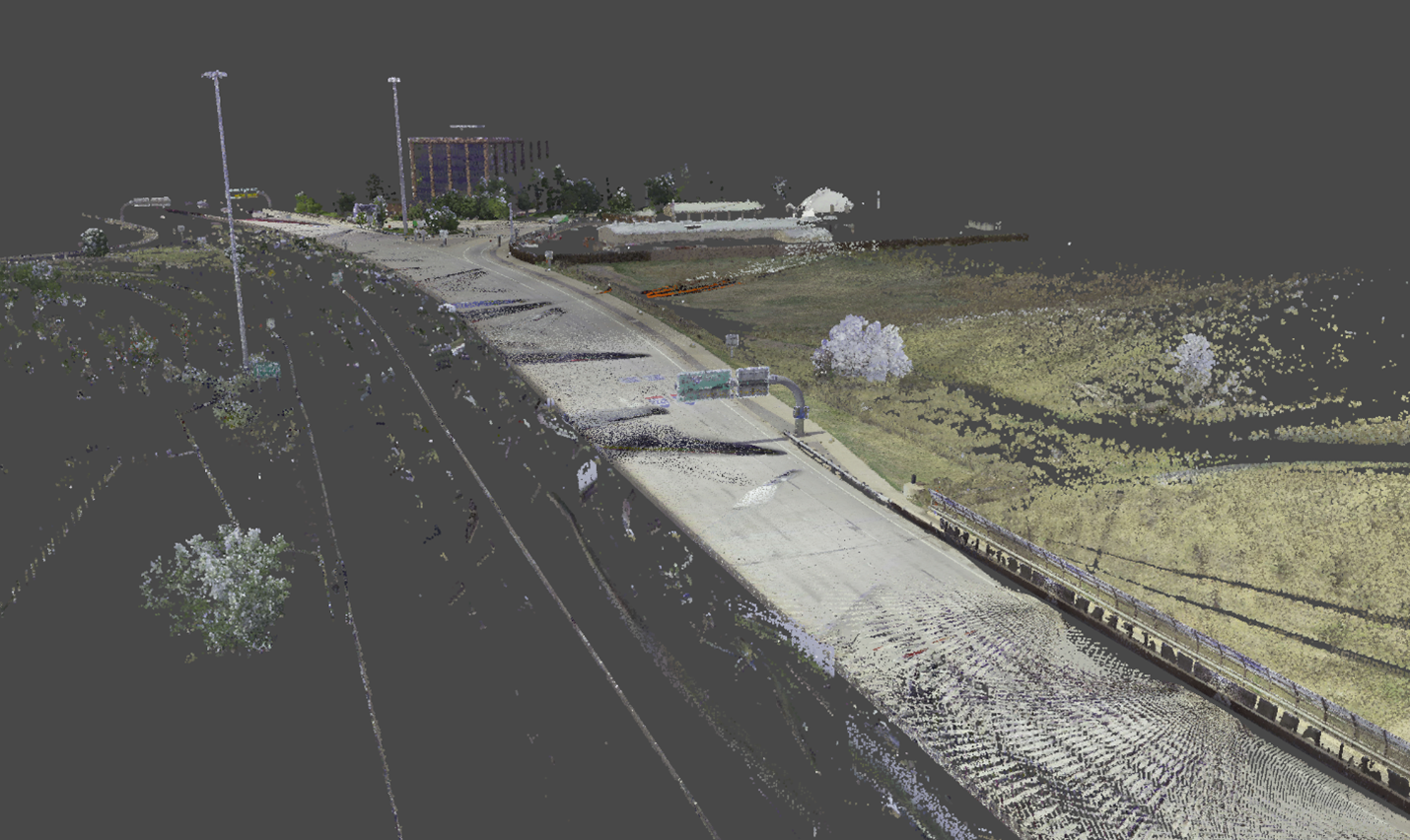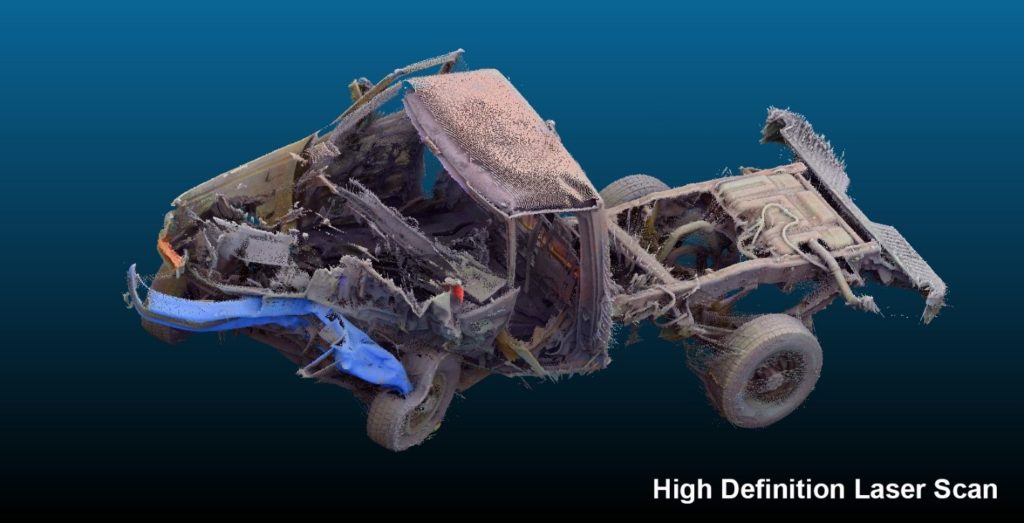
Knott Laboratory provides forensic engineering and animation, Civil & Structural, and Fire & Explosion Investigation services to reconstruct accidents.
What is 3D Scanning and How Does it Help in Accident Reconstruction?
By Richard M. Ziernicki, Ph.D., P.E., DFE
3D laser scanning is phenomenal technology. In the past, using the typical method of surveying, you would have a “Total Station”, where an individual has some equipment mounted on a tripod in a construction area. That person is pointing and shooting a laser to capture points and another person is holding a pole with a reflector. The process is very cumbersome and time consuming. It could take an entire 8 hour day to shoot maybe 800 points. Today’s scanners can automatically shoot up to 2 million points per second!
Each point has XYZ coordinates so you can go inside virtual space and find any distance or measurement between two points in that scan. Laser scans provide a virtual model, sometimes called a digital twin, of the real world.
You might say, why bother with that when you can take a picture? The problem with a picture is there are no dimensions. You can see the object in the picture but to determine how far is it from point A to point B, you have to use some photogrammetry methods which are convoluted and more complicated. Laser scanning is very useful when a car has crush damage that needs to be measured, or when a bridge or building collapses. You just freeze that moment in time and you come back and measure anything you want.



